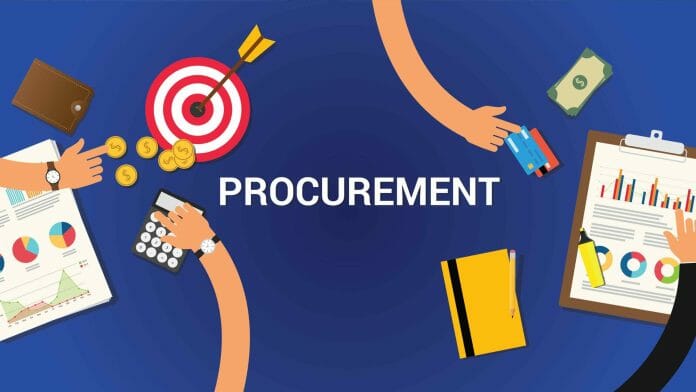By Suren Rajah
The objective of tender procurement is to foster transparent and accountable processes by encouraging fair competition among potential suppliers or contractors.
Organizations achieve this goal by inviting multiple qualified parties to submit bids, with the aim of securing the best value for money while adhering to regulations.
This not only enhances cost efficiency and innovation but also fosters the production of high-quality goods or services, ultimately benefiting consumers.
The concept has historical roots, dating back to the enactment of the first competition and antitrust law in the world, the Sherman Act in 1890, representing over a century of documented study and analysis.
However, this concept faces a threat from the practice of bid rigging, also known as collusive tendering.
This occurs when businesses, anticipated to engage in fair competition, covertly collaborate to artificially inflate prices or compromise the quality of goods or services for prospective purchasers participating in a bidding process.
Both private and public organizations often fall victim to such practices, as they commonly depend on competitive bidding to secure optimal value for their investments.
It is crucial to emphasize that bid rigging, whether in public or private procurement, stands in clear violation of the Competition Act 2010, which is enforced by the Malaysia Competition Commission (MyCC).
Bid rigging in public procurement
A study conducted by the Organisation for Economic Cooperation and Development (OECD) highlights the substantial role that public procurement plays in a nation’s economic development, comprising over 15% of its total expenditure.
The foremost threat to the judicious utilization of these funds persists in the form of bid rigging practices.
As such, in its commitment to combat bid rigging in public procurement, the government, through the Ministry of Finance, recently issued a circular on Integrity in Public Procurement (PK 1.6) in 2022.
This circular mandates that companies expressing interest in government tenders must comply with the Competition Act of 2010.
Effective from 1st June 2022, government agencies are now obligated to address bid rigging cartels in government procurement and report any indications of such practices to the MyCC.
With the implementation of this circular, individuals or companies identified engaging in bid rigging in public procurement are not only subject to substantial fines imposed by MyCC but also risk being blacklisted for a duration of five years by the Ministry of Finance.
The circular’s implementation has shown early signs of success, as MyCC recently addressed an alleged bid rigging case involving seven companies in four tenders for goods and services from the Ministry of Defence, valued at around RM20.8 million.
This marks MyCC’s second reported investigation into bid rigging practices.
The first decision involving a bid rigging infringement was made in 2022, where eight companies were found guilty of violating the Competition Act 2010 by engaging in anti-competitive bid-rigging agreements and practices related to projects at the National Academy of Arts, Culture, and Heritage of Malaysia (ASWARA).
After going through the appeal process, the total fines for that case amounted to approximately RM1 million.
What about bid rigging in private procurement?
While the government has taken proactive measures to address this issue in public procurement, yielding initial positive results, questions arise regarding the situation in private procurement.
Despite the Act being in force for twelve years, there have been no reported cases (for now) into bid rigging infringements involving the private sector.
Does this suggest that we have achieved an ideal market marked by unrestricted and fair competition, free from any instances of bid rigging anti-competitive practices within the private sector?
The likelihood of that happening is almost non-existent. Comparable to a covert virus, anti-competitive practices can discreetly permeate markets, exerting influence and distorting fair competition, all while eluding detection. And bid rigging practices are no different.
Our neighbouring country has experienced some success in uncovering these covert practices, with the Competition and Consumer Commission of Singapore (CCCS) documenting six cases of bid rigging, with five cases linked to the private sector.
That’s five more cases than we have, but, of course, Singapore’s Competition Act predates ours by seven years.
However, setting aside the numerical comparison (as age is merely a number), a pertinent question arises: Why haven’t these practices been identified in the private sector of our country, despite its larger population that offers a more substantial market for businesses to engage in?
Lack of awareness. Period.
Unlike MyCC, which has not garnered the same frequent attention in the headlines, the Malaysian Anti-Corruption Commission (MACC) consistently makes news by targeting both corrupt politicians and individuals.
With awareness currently at an all-time high, identifying corrupt practices has been more straightforward, leading to increased prosecution for such cases and even creating a specialized niche area of practice for legal practitioners.
However, similar to corruption cases, detecting anti-competitive practices becomes more challenging when awareness is lacking. MyCC cannot possibly uncover anti-competitive practices without the attentive eyes and ears of the public and businesses alike. It’s like a dormant engine expecting fuel.
Why is reviewing your tender procurement processes important?
Never underestimate the potential impact of bid rigging practices on your organization. In the context of public procurement, reports from OECD suggest that implementing improved procurement processes to counter bid rigging could result in significant savings, equivalent to at least 1% of a country’s GDP.
Translating this insight to Malaysia, the anticipated savings are projected to reach around USD4.3 billion, considering the GDP estimates for 2023.
What adds an interesting dimension to the scenario is that the companies, which could be exploiting the country’s wealth, are also capitalizing on opportunities in the private sector.
Unbeknownst to you, these very same companies might be discreetly engaging in tenders with your organizations, seeking a second chance to profit from the economic pie.
If potential bidders collaborate to artificially inflate their pricing proposals, you could be at a disadvantage, dealing with higher costs for potentially subpar quality goods.
While certain businesses might initially downplay this issue and opt to pass on the additional costs to consumers as a defensive measure against potential losses, it’s essential to recognize that this strategy is likely to offer only short-term relief.
Over time, discontentment with expensive goods/services creates an opportunity for new competitors to enter the market, offering more appealing alternatives. These newcomers, propagating lower costs and a dedication to higher quality, are poised to attract consumers away from your offerings.
As consumers seek improved deals, these new entrants can capture market share, potentially posing challenges for your business in retaining its customer base.
What next?
If you haven’t scrutinized your internal procedures yet, now is the ideal time to do so. Inadequate procurement safeguards and lack of awareness create an ideal curated petri dish for potential collusion among bidders, enabling them to maximize profits at the expense of your business, ultimately raising costs to the detriment of your clients.
Bidders have consistently outwitted the detection of anti-competitive bid-rigging by devising clever strategies and methods to project an illusion of competitiveness. However, be vigilant, as no matter the tactics employed, none are beyond the reach of the law.
If you’re still unconvinced, it’s crucial to also contemplate the potential corporate liability your company could face. There exists a delicate boundary distinguishing bid rigging practices from outright corruption.
Should your procurement officers be involved in facilitating bid rigging practices in exchange for kickbacks, the top-level management of the company might find themselves personally accountable under Section 17A of the MACC Act (Amendment) 2018.
Beyond the risk of reputational damage, substantial fines, and the looming spectre of lengthy prison terms become imminent consequences. The stakes are undeniably high, underscoring the paramount importance of safeguarding the integrity of your procurement processes.
Conclusion
Identifying such practices necessitates a thorough understanding of your industry and market characteristics, as well as the implementation of good governance and compliance practices. These measures can significantly minimize the losses suffered by your company.
Seek professional advice if you have to, as experts can provide valuable insights and strategies to fortify your procurement processes and mitigate the risks associated with bid rigging.
Remember, proactive measures today can safeguard your business from potential collusion-related challenges and ensure a fair and competitive environment in your procurement activities.
Our Competition Act has been operational for a dozen years, presenting opportunities for those who understand and leverage it. If you haven’t explored its advantages yet, now is the time to take action and benefit from its provisions.
Suren Rajah is a practicing lawyer, having previously held the position of Senior Assistant Director (Enforcement) at the Malaysia Competition Commission (MyCC). The perspectives shared in this article are entirely his own.









